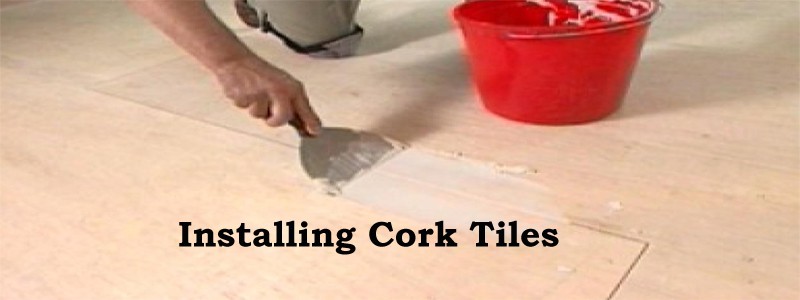| Installing cork tiles can be a delightful project because it can go quickly, letting you convert your room into a beautiful space. You’ll love the noise damping cork does too. Whether you go with floating cork tiles or glue-down cork tiles, the job is fairly straight forward. |
Cork tiles have been used for over a hundred years, though you might not have heard very much about them. They have seen a resurgence in popularity, due to the environmentally friendly and sustainable aspect that the trees do not have to be cut down to harvest the cork. Installing cork tiles is something that you can do yourself as well, which will cut down on the cost and give you a source of pride and enjoyment.
When you are installing cork tiles, you need to do some research beforehand. By learning more about the installation process and all of the pros and cons, you will become more comfortable with the process of installing cork tiles. There are a few different ways that cork flooring can be installed, depending upon the cork tiles that you choose, so be sure that you understand the installation method before purchasing your cork tiles.
One of the most common installation methods for cork tiles is using glue. Glue down cork tiles may seem like more work than you want, but they can actually be quite effortless to do with the right supplies. The right adhesive can make the process of installing cork tiles easy and simple and it will keep the cork tiles firmly affixed to your floors. I recommend Bostik’s Best glue because it’s low VOC and has wonderful elastic qualities that you’ll enjoy.
Floating cork tiles are also very common and they are the simplest to install. All you need to do is lay down the moisture resistant underlayer and click and lock the cork tiles into place. You may have to cut a few tiles to fit, but with a circular or table saw, you can accomplish this quite easily. This can be a great way to give your room a new look that will only take a few hours, depending upon the size of your room.
Before you begin installing cork tiles, no matter which ones you choose, there are some things that you must do. You need to allow the cork tiles to sit in the room where they are going to be used, outside their packaging, for at least 48 hours — though my experience is several weeks is better — depending upon your manufacturer’s instructions. Preparing the subfloor is at the top of that list as well. Make sure that your subfloor is completely level and clean. This means that you want to sweep and mop the area to ensure that there is nothing that can hinder the cork flooring installation. If your subfloor is not level, it may be necessary that you use a self-leveling compound. Never under any circumstances should you install the cork tiles until the floors are completely clean and dry.
Reading the instructions that comes with your cork tiles will let you know what type of adhesive to use (if needed), as well as any special instructions, including the trowel size and more. You will want to carefully read these instructions before beginning the installation process to become more comfortable with your project.
Some cork tiles, many in fact, are sealed at the factory with products like aluminum oxide. Find out if you can seal over that with a low VOC product like Varathane’s Diamond Coat Polyurethane without voiding the warranty. You’ll be happier with more protection on your beautiful cork floor than with just the factory sealing — partially because it seals the gaps between the tiles.
Installing cork tiles does not have to be difficult. You will find that it is a project that most do-it-yourselfers can accomplish with minimal fuss. By following instructions and having the proper supplies, you will be able to install your cork tiles and enjoy them for many years to come.

Dear Flooring Lady,
Thank you for your very nice article.
For those interested in finding out more about sustainable cork oak floors, Wicanders cork oak floors represent a generations-old balance between environmental conservation, creation of wealth, and social development that benefits millions of people worldwide.
Wicanders was chosen by the readers of Qualified Remodeler, because cork oak is a sustainable resource that balances natural beauty and environmental responsibility, and it also absorbs acoustic vibrations, reduces allergens, and prevents thermal transfer, which reduces energy costs.
And, of course, it is very easy to install :-)
You can read more about Wicanders Cork Oak Floors on our blog, http://wwww.wicanderscorkoakblog.com.
Thanks a lot!
Just make sure you seal those tiles after installing
Hmmm, I never would’ve thought of cork tiling….we are wanting to redo our kids’ playroom…get away from the carpet installed there. :/ This might be just the thing we could look at installing there. Thanks for this informative post.